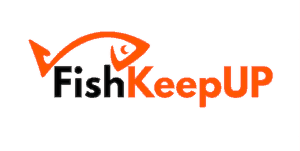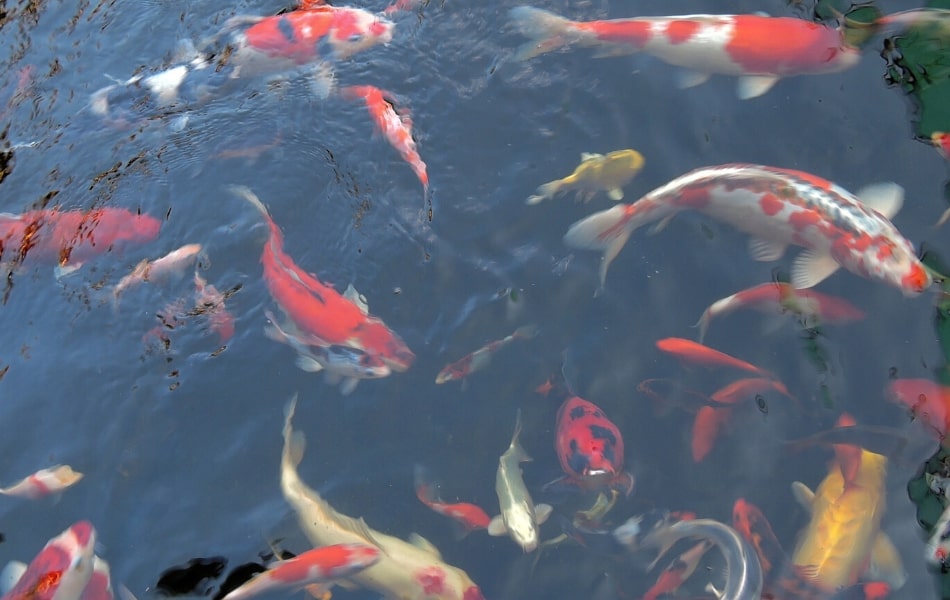Existence of a common misconception that if you limit the number of Koi Fish in the pool, you can raise them comfortably. But is that really the case?
Can Koi Fish Survive in Kiddie Pool? The perfect habitat for Koi Fish center around three vital elements – pool depth, size, and water temperature. Koi Fish require at least 3-4 feet depth. Suitable pool dimensions are 6×8 feet, this size can hold up to 5 average small Koi Fish. Kiddie pool is a shallow body of water where the fluctuation of water parameters and temperature can be severe.
However, you can still go ahead, purchase a couple of Koi fish, set up your kiddie pool, and release the fish in it; the Koi are likely to survive. However, just because you can do something, does not necessarily mean you should.
Here is all you need to know about Koi Fish, and raising them inside a kiddie pool.
Minimum Pond Size For A Koi Fish To Survive
It is to be remembered that Koi fish require a lot of space. The minimum depth for a Koi pond should be at least three to four feet. At a depth of three feet, a 6×8 feet deep pond will yield a little over a thousand gallons of water.
You will need to increase the dimensions of the pond depending on the number of Koi fishes you have there. For the size mentioned above, you can keep no more than 5 average or small size fish.
The best possible depth for harboring Koi fish is a depth of 5 or 6 feet. It is to be remembered that Koi fish use a variety of muscles to swim at a constant depth.
A pool with a large surface area as well as a reasonable depth will allow them the opportunity to regularly exercise all the muscles in their bodies. As a result, they will be able to develop much better body shape and maintain their healthy metabolism.
Right Depth Helps Fish in the Winter.
The depth of the water body is very important for Koi. During winter in an unheated pond, Koi will be able to fare better if they are able to retreat from the cold water near the surface of the pond to the relatively warmer water near the bottom of a deep pond.
Safety in the Fish Pond
The Koi pond should not have any sharp edges. This means that the bank of the pond should be free from sharp edges or corners. You should also make sure that the area just above the water surface does not have such sharp objects.
Despite not being skittish in nature, Koi fish will occasionally jump away from an unexpected movement or motion.
During feeding times, you will discover that hungry fishes try to climb over one other to reach out to the food. At other times, the Koi will dart forward to clean their gills by flushing water through them.
Now, If there are objects situated inside the pond or hanging over the pool’s surface, the Koi may end up injuring themselves. These injuries can lead to scars on their bodies, or even damage their organs or result in infections. If the damage is extremely severe, the fish might even die.
What Do You Need For a Backyard Koi Fish Pond?
Setting up a Koi fish pond in your backyard will require you to put in a lot of effort and hard work. Fish are not that easy to take care of, especially Koi.
Besides, the water body in question is a full sized pond, and not a household fish tank. Hence, you will have to put in three or four times the effort you need to set up a fish tank. Here is how you can get started with your backyard Koi pond.
Required Swimm Sapce in Fish Pond
The Koi require a good amount of space for their movement, both horizontally as well as vertically.
Hence, the pond must be dug deep and wide. Measurements mentioned earlier in this article can be considered as the standard size of the ponds.
However, as suggested, the pond’s size needs to be increased depending on the expected number and size of the Koi in one or two years.
Hiding Pond Places
The pond should have hiding places for the Koi, like small holes. In the event that a cat, bird or any other animal comes too close to the pond, the fish can hide in those places.
Koi are very beautiful to look at and can easily attract the attention of cats and other domestic or household animals.
In order to make sure that the pets do not end up too close to the pond, it is wise to cover it with a net. The net can also prevent the accumulation of objects like leaves or branches in the pond.
Pond Mosquitos Issue
If there is a pond, there will be mosquitos. Mosquitos are bad, not just for the fish, but also for you. Diseases like dengue and malaria are spread more in areas where there is a mosquito infestation.
If you do not want your Koi pond to turn into such a nest, it is in your best interest to have Mosquito Fish in the pond along with the Koi. These small fishes feed on mosquito larvae and can help take care of your pond’s mosquito problem.
You should know that Mosquito Fish are compatible with both Koi and Goldfish, as well as various other carps.
Hence, you do not need to worry about the two types of fish living together. Use an airstone inside the pond if you can. This will help provide better water circulation inside the pond more efficiently compared to an air pump. The airstone is very important for your pond as it ensures oxygenation inside of it.
Set up a proper filtration mechanism for the Koi pond to separate waste materials from the water.
A net over the pool
Why put a net: The main reason for putting a net over your kiddie pool is to keep out unwanted objects from falling into it, as well as to deter cats, birds and other predators from disturbing your Koi fish.
Netting can help prevent leaves, branches, and other inanimate objects from falling into the pool. Cats and birds will also keep themselves at bay. Even if they are curious and try to reach into the pool, they will not be able to do so.
All in all, the netting is to be placed to ensure the safety of your fish and overall cleanliness of the pond, and you should take this matter seriously.
Choosing Suitable Netting
If you head over to Amazon and search for pond netting, you will find a wide range of pond nets that can be used for the purpose. These nets come in various shapes, sizes, and dimensions. They differ from one another in terms of material and design.
For you to protect your pond from predators and foliage, while maintaining its natural beauty, it is recommended that you avoid the tent or dome netting.
Instead, you should opt for the plane ones that come with fixing stakes.
However, if you are using the pond for fish farming or for commercial purposes, and are not that bothered with its beauty, feel free to go for the tent netting.
Choose a net that is woven in such a way that there is very little gap in the mesh.
Pond Net Maintenance
Make sure you are cleaning the leaves, branches and other debris accumulating on the netting regularly.
You can use a leaf blower for this purpose if you want. If you leave the debris as it is, it will weigh down the net over time, ultimately leading to its collapse.
This will then result in a heavy accumulation of the debris inside the pool, making life miserable for your Koi fish.
Integrating a proper filtration system in the pool
Although it is possible to raise a few small Koi fish in a pond without any sort of filtration mechanism in pond, it is almost impossible to rear full sized Koi fish in a pool or pond without proper filtration.
A Koi pond should have a proper filtration system that is suitable for the total number of fishes being cared for in it. The filtration system will also depend on the size of the fishes as well as the type of food they will be fed with.
You need to understand that at the end of the day, the purpose of filters is to dispose or separate waste materials. The most common form of waste in pools, ponds, or any water body that is used for fishkeeping is fish excretion.
This form of waste is highly dependent on the type of food the fish are being fed. Hence, your filtration system is to be designed by keeping that in mind.
How many Goldfish Can I keep in Kiddie Pool?
Although we have established that Koi can survive in a kiddie pool, we would still recommend you to go for a pond if you must harbor the species.
However, if you want to settle with a kiddie pool, you should go for Goldfish as an alternative to Koi. Goldfish will require the same care and arrangements that Koi need. Hence, you can follow the same procedure mentioned above to set up your Goldfish kiddie pool.
The stocking, however, has to be done a bit differently. The general stocking rule of thumb for Goldfish is around 10-20 gallons for each fish. Fish that are single-tailed require more room. Two Goldfish can easily stay in a 30 gallon pool of water.
However, it is not recommended to accommodate them in such a manner if you are going for a long term plan.
Go for 40 gallons for two Goldfish just to play it safe. Remember, that with the addition of a new Goldfish, you will need to increase the volume by 12-15 gallons.
All things considered, even if Koi can survive in a kiddie pool, it is to be understood that it can never be a long term adobe for them.
Koi requires lots of space, and other natural amenities, something which a simple kiddie pool purchased from Amazon cannot provide. Hence, if you must keep Koi in your backyard, it should be inside a medium to large sized pond, and not a kiddie pool.

